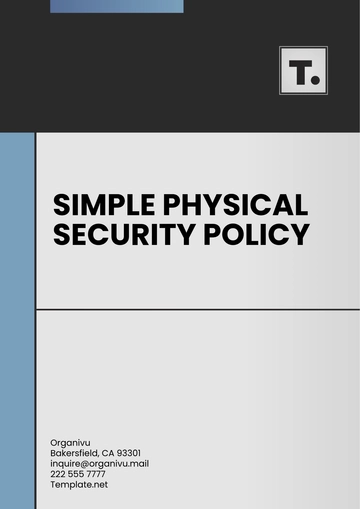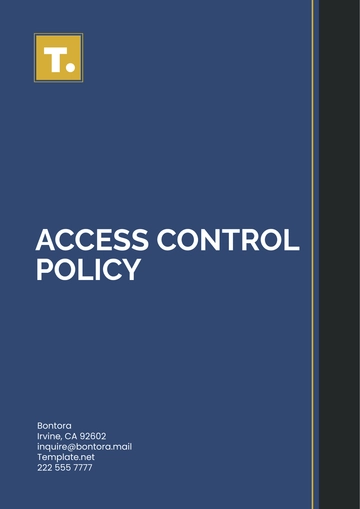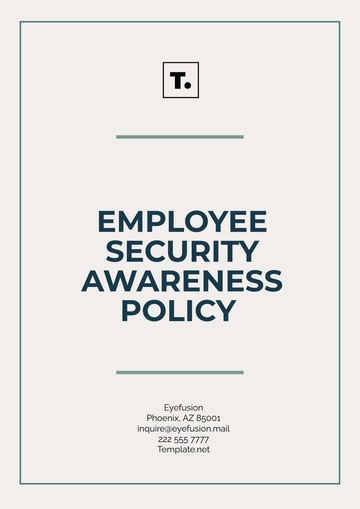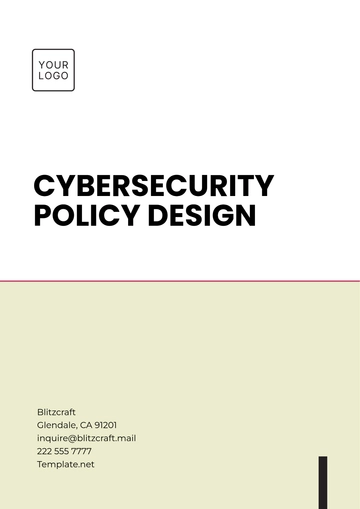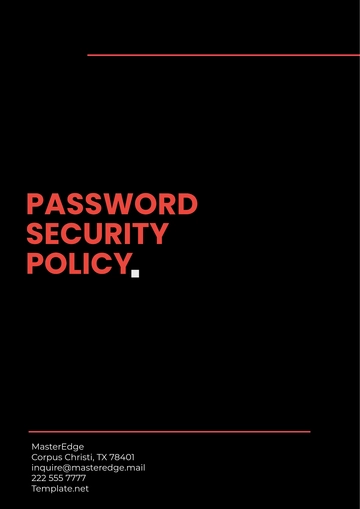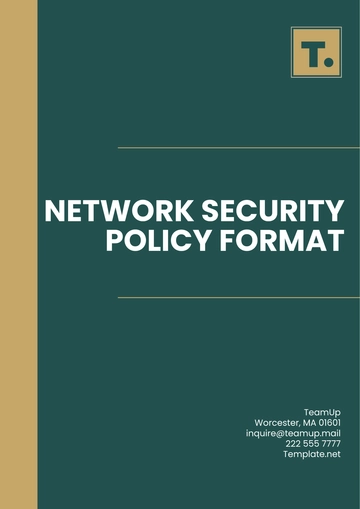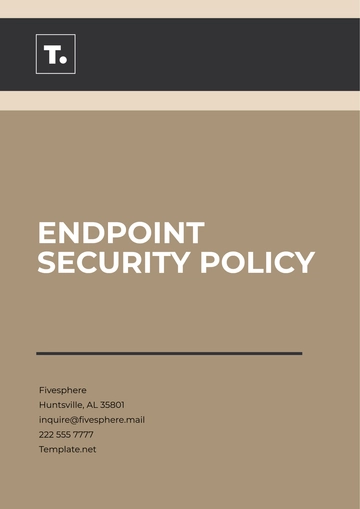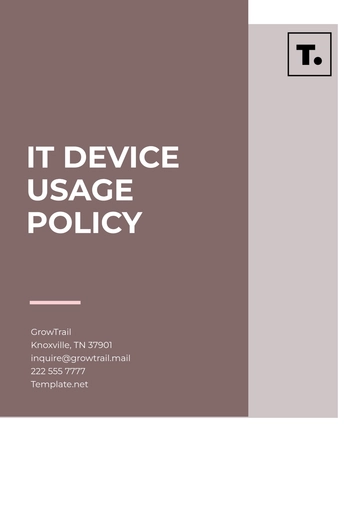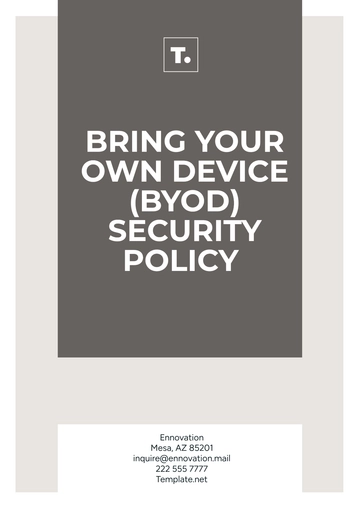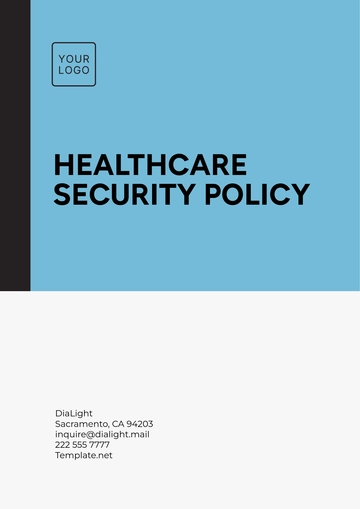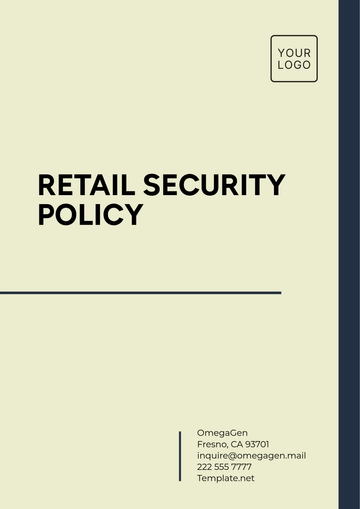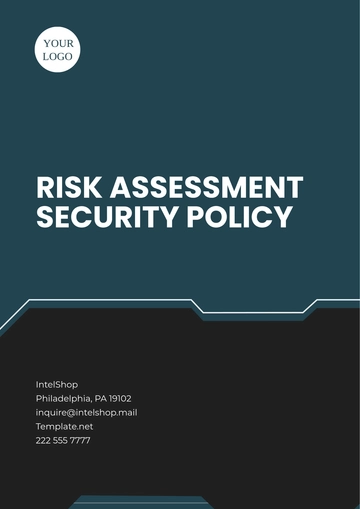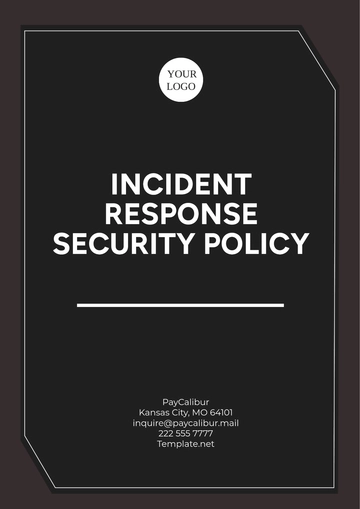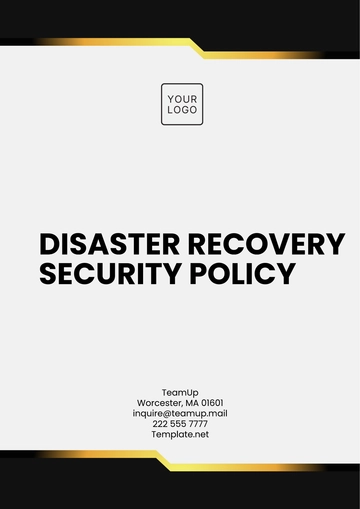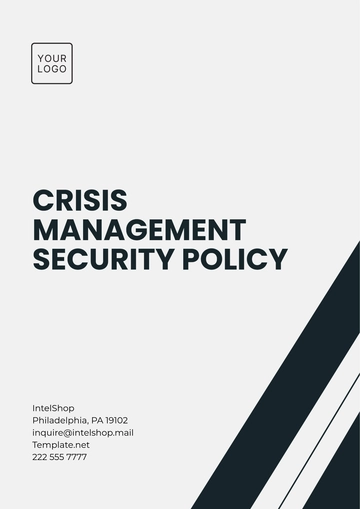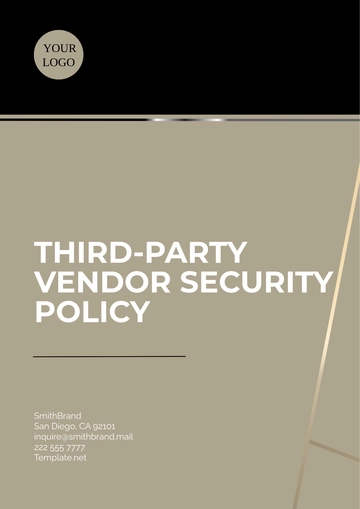Free Legal Information Security Policy
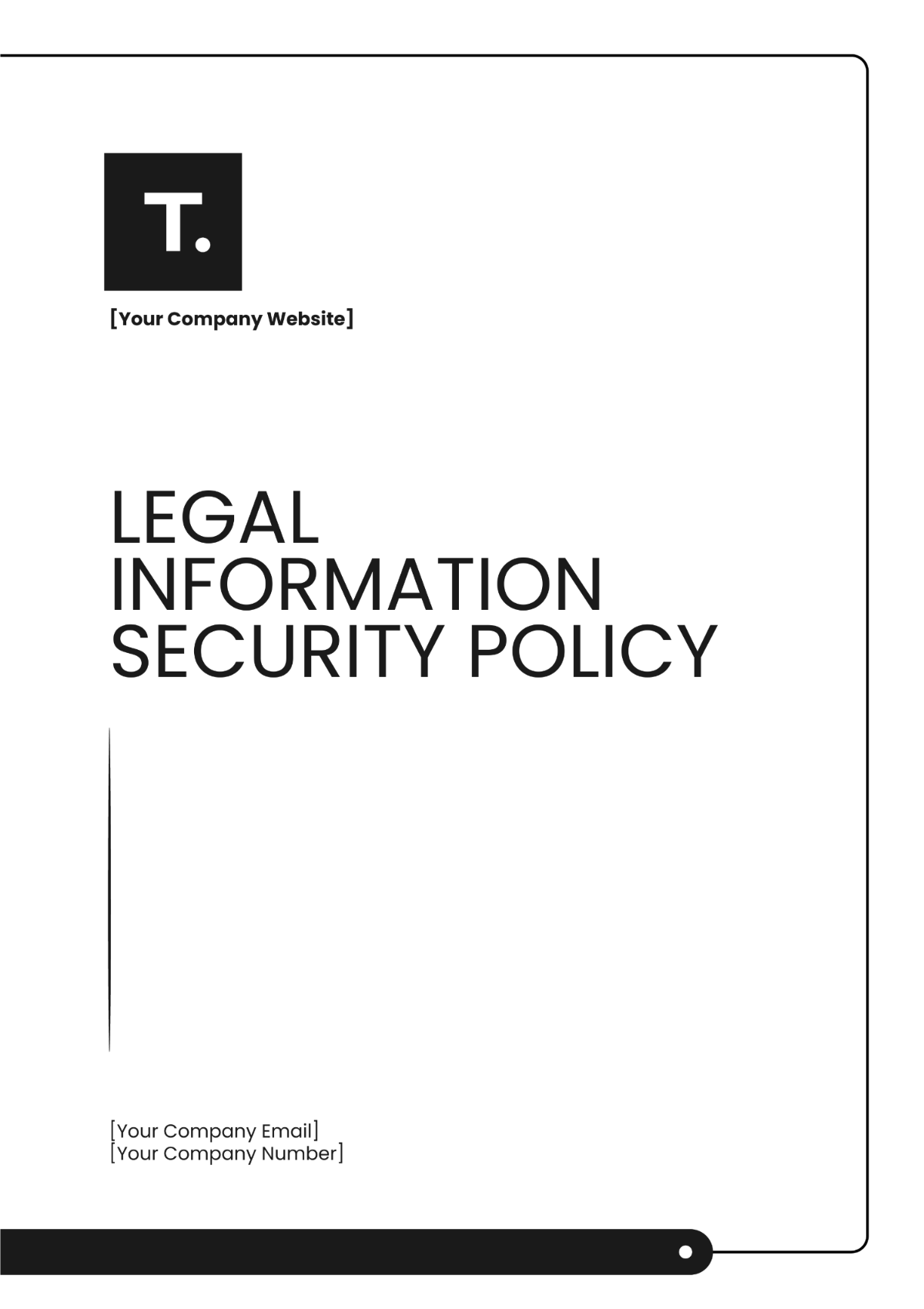
I. Introduction
A. Purpose of the Policy
The purpose of the Legal Information Security Policy is to establish a comprehensive framework for safeguarding the confidentiality, integrity, and availability of legal information within [Your Company Name]. As a global organization with a significant presence in the legal industry, it is imperative that we maintain the highest standards of information security to protect sensitive data from unauthorized access, breaches, and other threats. This policy outlines the principles, procedures, and responsibilities necessary to ensure that legal information is secure, reliable, and compliant with all applicable laws and regulations as we approach the year 2050 and beyond.
B. Scope of the Policy
This policy applies to all employees, contractors, partners, and third-party service providers who have access to legal information within [Your Company Name]. The scope includes, but is not limited to, electronic data, physical records, communications, and any other forms of legal information. This policy also extends to all locations where [Your Company Name] operates, including domestic and international offices, data centers, and remote work environments. As we anticipate continued technological advancements and regulatory changes, this policy will be periodically reviewed and updated to address new risks and challenges.
C. Legal and Regulatory Compliance
[Your Company Name] is committed to complying with all applicable laws, regulations, and industry standards related to information security. This includes, but is not limited to, data protection laws, cybersecurity regulations, and legal industry-specific guidelines. As the regulatory landscape evolves, particularly with the implementation of new global data protection laws expected by 2050, [Your Company Name] will ensure that this policy remains aligned with the latest legal requirements. Regular audits and assessments will be conducted to verify compliance and identify areas for improvement.
II. Information Security Governance
A. Information Security Roles and Responsibilities
Chief Information Security Officer (CISO)
The Chief Information Security Officer (CISO) at [Your Company Name] is responsible for overseeing the development, implementation, and maintenance of the Legal Information Security Policy. The CISO ensures that all security measures align with the company's strategic goals and legal obligations. The CISO also leads the Information Security Governance Committee and reports directly to the Chief Executive Officer (CEO).
Information Security Governance Committee
The Information Security Governance Committee is composed of senior executives, including the CISO, Chief Legal Officer (CLO), Chief Technology Officer (CTO), and representatives from key business units. This committee is responsible for approving security policies, reviewing risk assessments, and ensuring that adequate resources are allocated to information security initiatives. The committee meets quarterly to review the status of the security program and address emerging threats.
Legal Information Security Team
The Legal Information Security Team, under the direction of the CISO, is responsible for implementing and managing the technical and procedural controls that protect legal information. This team includes security analysts, engineers, and legal experts who work together to monitor security incidents, conduct vulnerability assessments, and ensure compliance with this policy.
B. Information Security Risk Management
Risk Assessment
[Your Company Name] conducts regular risk assessments to identify potential threats to legal information and evaluate the effectiveness of existing controls. These assessments include both qualitative and quantitative analyses and consider factors such as the sensitivity of legal information, the likelihood of threats, and the potential impact of a security breach. The results of these assessments are used to prioritize security investments and develop mitigation strategies.
Risk Mitigation Strategies
Based on the findings of the risk assessments, [Your Company Name] implements a range of risk mitigation strategies to reduce the likelihood and impact of security incidents. These strategies include the deployment of advanced encryption technologies, the implementation of access controls, and the adoption of secure communication protocols. Additionally, [Your Company Name] invests in employee training programs to enhance awareness of security risks and promote best practices in information handling.
C. Policy Review and Updates
This Legal Information Security Policy is reviewed annually by the Information Security Governance Committee to ensure its relevance and effectiveness. As we approach the year 2050, the policy will be updated to address new technological advancements, emerging threats, and changes in the regulatory environment. Any significant changes to the policy will be communicated to all stakeholders, and training sessions will be provided to ensure that employees understand and comply with the updated requirements.
III. Information Security Controls
A. Access Control
User Authentication
To protect legal information, [Your Company Name] implements robust user authentication mechanisms, including multi-factor authentication (MFA), to verify the identity of users accessing sensitive systems. All employees and authorized personnel are required to use MFA when accessing legal information systems, both on-premises and remotely. The MFA process involves a combination of something the user knows (e.g., a password), something the user has (e.g., a security token), and something the user is (e.g., biometric verification).
Role-Based Access Control (RBAC)
Access to legal information within [Your Company Name] is governed by Role-Based Access Control (RBAC). Employees are granted access to information and systems based on their job roles and responsibilities. This ensures that only authorized personnel can access sensitive legal information, reducing the risk of unauthorized access. RBAC policies are regularly reviewed and updated to reflect changes in job roles, promotions, and organizational restructuring.
B. Data Encryption
Encryption of Data at Rest
[Your Company Name] employs advanced encryption technologies to protect legal information stored on servers, databases, and other storage devices. Data at rest is encrypted using industry-standard algorithms, such as Advanced Encryption Standard (AES) with a minimum key length of 256 bits. Encryption keys are managed securely, and access to encrypted data is restricted to authorized personnel only.
Encryption of Data in Transit
To safeguard legal information during transmission, [Your Company Name] uses secure communication protocols, such as Transport Layer Security (TLS) and Secure/Multipurpose Internet Mail Extensions (S/MIME). All data transmitted over public and private networks is encrypted to prevent interception and unauthorized access. This includes emails, file transfers, and communications between client devices and legal information systems.
C. Data Backup and Recovery
Regular Data Backups
[Your Company Name] performs regular backups of legal information to ensure data integrity and availability in the event of a security incident or system failure. Backups are conducted on a daily, weekly, and monthly basis, and are stored in secure, offsite locations. The backup process is automated, and backup data is encrypted to prevent unauthorized access.
Disaster Recovery Planning
In addition to data backups, [Your Company Name] has developed a comprehensive Disaster Recovery Plan (DRP) to ensure business continuity in the event of a major disruption. The DRP includes procedures for restoring legal information, recovering critical systems, and resuming normal operations within predefined recovery time objectives (RTOs). The DRP is tested annually, and the results are used to refine and improve recovery strategies.
D. Security Monitoring and Incident Response
Continuous Security Monitoring
[Your Company Name] employs continuous security monitoring to detect and respond to potential threats to legal information. This includes the use of Security Information and Event Management (SIEM) systems, intrusion detection systems (IDS), and intrusion prevention systems (IPS). Security events are logged, analyzed, and correlated in real time to identify suspicious activity and initiate appropriate responses.
Incident Response Plan
In the event of a security incident, [Your Company Name] follows a structured Incident Response Plan (IRP) to contain, investigate, and mitigate the impact of the incident. The IRP outlines the roles and responsibilities of the Incident Response Team, communication protocols, and procedures for reporting incidents to regulatory authorities and affected parties. Post-incident reviews are conducted to identify lessons learned and implement corrective actions.
E. Physical Security Controls
Secure Facilities
Physical access to [Your Company Name]'s facilities, including data centers and offices where legal information is processed and stored, is restricted to authorized personnel only. Security measures include access control systems, biometric authentication, surveillance cameras, and security guards. All visitors are required to sign in and be escorted by an authorized employee during their visit.
Equipment Security
All equipment used to process, store, or transmit legal information is secured to prevent unauthorized access, tampering, or theft. This includes servers, workstations, laptops, mobile devices, and removable media. Devices are configured with encryption, password protection, and remote wipe capabilities to protect data in the event of loss or theft.
IV. Legal Information Handling and Protection
A. Data Classification
Classification Levels
[Your Company Name] classifies legal information into different levels based on its sensitivity and value. The classification levels include:
Confidential: Information that, if disclosed, could cause significant harm to [Your Company Name], its clients, or its business operations. Examples include client contracts, litigation documents, and intellectual property.
Restricted: Information that is sensitive but less critical than confidential data. Examples include internal communications, draft legal documents and internal reports.
Public: Information that is intended for public dissemination and poses no risk if disclosed. Examples include press releases, marketing materials, and publicly available legal resources.
Handling Procedures
Based on the classification level, specific handling procedures are established for the protection of legal information. Confidential information requires the highest level of security, including encryption, restricted access, and secure disposal methods. Restricted information is protected by access controls and secure storage, while public information is managed according to standard business practices.
B. Data Retention and Disposal
Data Retention Policy
[Your Company Name] has established a Data Retention Policy that outlines the duration for which legal information must be retained. Retention periods vary based on the type of information, regulatory requirements, and business needs. Legal information is retained for a minimum of seven years, with longer retention periods applied to specific categories, such as contracts and litigation records. As we approach the year 2050, retention policies will be reviewed to account for changes in legal requirements and technological capabilities.
Secure Disposal of Information
When legal information is no longer required, it is securely disposed of to prevent unauthorized access or data breaches. Secure disposal methods include shredding of physical documents, secure deletion of electronic records, and the destruction of storage media. All disposal activities are documented, and compliance with disposal procedures is regularly audited.
V. Employee Training and Awareness
A. Information Security Training
Mandatory Training Programs
All employees of [Your Company Name], including new hires and contractors, are required to complete mandatory information security training programs. These programs cover the principles of legal information security, the importance of compliance with this policy, and best practices for protecting sensitive data. Training is conducted annually, with additional sessions provided as needed to address emerging threats or policy updates.
Specialized Training for Legal Staff
Legal staff at [Your Company Name] receive specialized training tailored to the unique challenges of handling legal information. This includes training on data protection laws, ethical obligations, and secure communication practices. Legal staff are also trained in the use of encryption tools, secure document management systems, and incident response procedures.
B. Security Awareness Initiatives
Regular Awareness Campaigns
[Your Company Name] conducts regular security awareness campaigns to reinforce the importance of information security and promote a culture of vigilance among employees. These campaigns include email newsletters, posters, webinars, and interactive workshops. Topics covered include phishing prevention, secure password management, and the risks associated with social engineering attacks.
Phishing Simulations
To test employees' awareness and preparedness, [Your Company Name] conducts periodic phishing simulations. These simulations are designed to mimic real-world phishing attacks and assess how employees respond. Results are used to identify areas for improvement and to provide targeted training to employees who may be vulnerable to phishing threats.
VI. Third-Party Risk Management
A. Vendor Assessment and Selection
Security Due Diligence
Before engaging with third-party vendors who will have access to legal information, [Your Company Name] conducts thorough security due diligence. This includes evaluating the vendor's information security policies, technical controls, and compliance with relevant regulations. Vendors must demonstrate their commitment to protecting legal information and meet the security standards set by [Your Company Name].
Contractual Security Requirements
All contracts with third-party vendors include specific security requirements that vendors must adhere to. These requirements cover data protection, incident reporting, access controls, and audit rights. Vendors are also required to comply with [Your Company Name]'s Legal Information Security Policy and undergo regular security assessments.
B. Ongoing Monitoring and Audits
Vendor Security Monitoring
[Your Company Name] continuously monitors the security practices of third-party vendors to ensure ongoing compliance with contractual security requirements. This includes reviewing vendor security reports, conducting audits, and performing vulnerability assessments. Any identified security risks are promptly addressed through remediation plans and, if necessary, the termination of the vendor relationship.
Regular Audits
In addition to ongoing monitoring, [Your Company Name] conducts regular audits of third-party vendors to assess their security posture and compliance with the Legal Information Security Policy. Audits are conducted at least annually and may include on-site visits, documentation reviews, and interviews with vendor personnel. Audit findings are documented, and corrective actions are tracked to resolution.
VII. Compliance and Audit
A. Compliance with Legal and Regulatory Requirements
Legal Compliance
[Your Company Name] is committed to complying with all applicable legal and regulatory requirements related to information security. This includes adherence to data protection laws, industry standards, and ethical obligations in the legal profession. The Legal Information Security Policy is designed to meet these requirements and is regularly reviewed to ensure ongoing compliance.
Industry Standards
In addition to legal compliance, [Your Company Name] aligns its security practices with industry standards, such as ISO/IEC 27001 and NIST Cybersecurity Framework. These standards provide a structured approach to managing information security risks and implementing best practices. [Your Company Name] undergoes regular external assessments to validate its adherence to these standards.
B. Internal and External Audit
Internal Audits
[Your Company Name] conducts regular internal audits to evaluate the effectiveness of the Legal Information Security Policy and identify areas for improvement. Internal audits are carried out by the Information Security Team, with findings reported to the Information Security Governance Committee. The audit process includes a review of security controls, risk assessments, and compliance with policy requirements.
External Audits
To ensure transparency and accountability, [Your Company Name] engages independent third-party auditors to conduct external audits of its information security practices. External audits are performed annually and provide an objective assessment of the company's security posture. Audit reports are shared with senior management and used to inform strategic decisions related to information security.
VIII. Incident Reporting and Management
A. Incident Reporting Procedures
Reporting Security Incidents
All employees of [Your Company Name] are required to report any suspected or actual security incidents involving legal information immediately. Reports should be made to the Information Security Team using the designated incident reporting channels, such as the company’s incident management system or a dedicated hotline. Prompt reporting enables the Incident Response Team to take swift action to mitigate the impact of the incident.
Reporting to Authorities and Clients
In the event of a security breach that affects legal information, [Your Company Name] is committed to complying with all legal requirements for reporting the incident to regulatory authorities and affected clients. The Incident Response Team, in collaboration with the Legal Department, will determine the appropriate reporting actions based on the nature and severity of the breach. Clients will be notified in a timely and transparent manner, with clear communication of the steps being taken to address the incident.
B. Post-Incident Analysis and Reporting
Root Cause Analysis
Following a security incident, [Your Company Name] conducts a thorough root cause analysis to identify the underlying factors that contributed to the breach. This analysis is led by the Incident Response Team, with input from relevant stakeholders, including IT, legal, and compliance teams. The goal is to understand how the incident occurred and to implement corrective actions to prevent future occurrences.
Incident Reporting
The results of the root cause analysis are documented in a formal incident report, which includes a detailed account of the incident, the actions taken to mitigate its impact, and recommendations for future improvements. Incident reports are reviewed by the Information Security Governance Committee and used to inform updates to the Legal Information Security Policy and related procedures.
IX. Policy Enforcement and Disciplinary Action
A. Enforcement of the Policy
[Your Company Name] takes the enforcement of the Legal Information Security Policy seriously. All employees, contractors, and third-party vendors are expected to comply with the policy and its associated procedures. Non-compliance with the policy may result in disciplinary action, including termination of employment or contract, depending on the severity of the violation.
B. Disciplinary Action
Employee Disciplinary Measures
Employees who violate the Legal Information Security Policy may face disciplinary action, ranging from a formal warning to termination of employment. The severity of the disciplinary action will be determined based on the nature of the violation, the employee's intent, and the potential impact on [Your Company Name]. In cases of gross negligence or willful misconduct, immediate termination may be warranted.
Vendor and Contractor Consequences
Third-party vendors and contractors who fail to comply with the Legal Information Security Policy may have their contracts terminated or face other legal consequences. [Your Company Name] reserves the right to seek damages or pursue legal action against vendors and contractors who cause harm to the company through their non-compliance.
X. Conclusion
As [Your Company Name] moves toward the year 2050 and beyond, the importance of robust information security measures cannot be overstated. This Legal Information Security Policy represents our commitment to protecting the legal information that is vital to our business operations and our clients' trust. By adhering to the principles and procedures outlined in this policy, [Your Company Name] ensures that we remain at the forefront of information security, prepared to meet the challenges of the future while maintaining the highest standards of legal and regulatory compliance. This policy will continue to evolve as new technologies, threats, and regulations emerge, ensuring that our legal information remains secure and protected for decades to come.
- 100% Customizable, free editor
- Access 1 Million+ Templates, photo’s & graphics
- Download or share as a template
- Click and replace photos, graphics, text, backgrounds
- Resize, crop, AI write & more
- Access advanced editor
Protect your sensitive information with the Legal Information Security Policy Template available on Template.net. This editable template helps you establish robust security policies to safeguard your data. Editable in our AI Editor Tool, it covers all critical aspects of information security. Download now to enhance your data protection measures!
You may also like
- HR Policy
- Restaurant Policy
- Company Policy
- Accounting Policies and Procedures
- Website Policy
- Privacy Policy
- Safety Policy
- School Policy
- IT and Software Policy
- Law Firm Policy
- Construction Policy
- Interior Design Policy
- Travel Agency Policy
- Education Academic Policy
- Security Policy
- Real Estate Policy
- Expense Policy
- Software Policy



